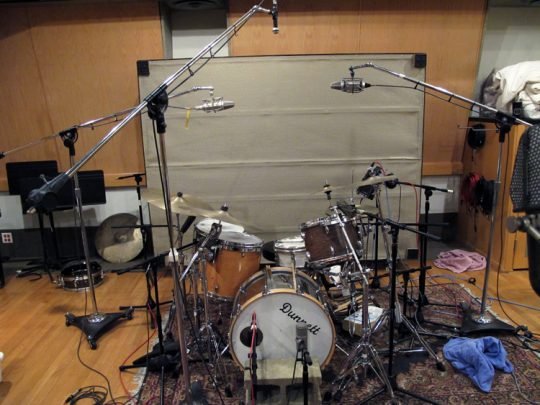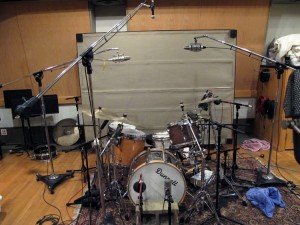Popular Click Track Myths Examined
One of the first points addressed in any session is the click track. Many musicians believe that using a metronome during recording immediately results in a stiff track with no breathing room. Engineers often favor click tracks because it makes editing and overdubbing much easier. Click tracks are an invaluable tool, but sometimes they are not right.
As mentioned earlier, a common mentality among musicians (especially younger ones) is that using a metronome will result in robotic performance with no emotion or energy. This is the wrong mindset. The truth is that no performance will ever be “perfectly” on time. The purpose of the metronome is simply to provide a rhythmic boundary for the group and prevent the drums from varying in tempo. Any good drummer will be able to work within these bounds and still “groove”.
Recordings done with a click track should end up sounding just as natural as any other recording. If the drummer can groove and the band has a good pocket, this group will have no problem following a metronome. If a drummer refuses to use a click track simply based on the argument that it will “sound robotic”, I interpret this to mean they do no practice enough. For me, I believe a drummers job is to keep the time – if you can’t do this you should probably start practicing! I would guess that a huge majority of the songs played on the radio in the past couple decades has been recorded with a click track – enough reason for most people to realize that click track recordings are the way to go.
However, a click track is not always a good idea. Some examples include songs with multiple time signatures, live recordings with no overdubs, orchestral recordings, inexperienced groups who simply cant perform to a click, and bands so good they do not need one (unlikely). A click track does not mean the performance will automatically be awesome. In most scenarios, I feel it definitely does help glue together a performance, but there are some cases in which a metronome will negatively effect the performance. The most common is when a drummer is speeding up, realizes they have lost the tempo, then slow down to catch it again. This wavering of the tempo results in a super unprofessional sounding recording, and should be avoided. Another example of this could be if a band is significantly altering their performance to accommodate a click track.
If any type of overdubbing is part of the session, it is foolish to not use a click track. This is especially true for songs that have breaks where instruments (drums in particular) drop out. Having a click guide for this type of stuff is like night and day. On this note, it is important to not force a click on a band just because it makes it easier to “protools” a mix later on. The decision to use a click should solely take into account improvements in the music – of course it doesn’t hurt to mention ease of overdubbing in most scenarios.
Generally speaking, I think almost all bands will benefit from click track recording. When used properly, it will increase the tight-factor of any song while doing wonders for intensity and build of a track. As we talked about, however, it is not always right. I like to consider these points for any session I am doing and then decide whether or not a click track is the right choice for the session.



